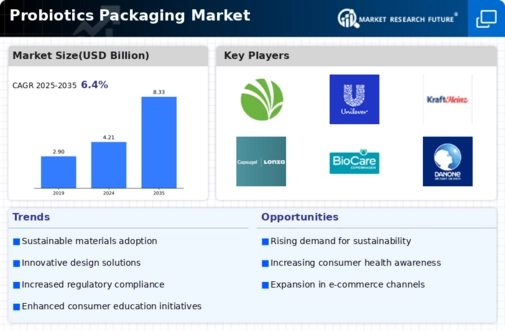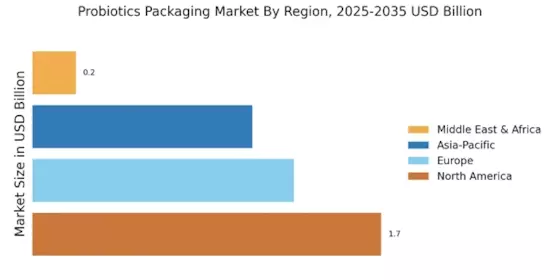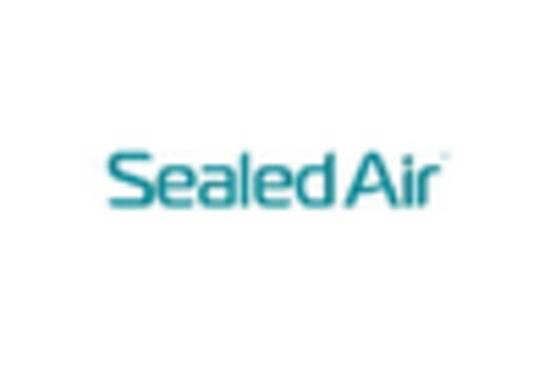The Probiotics Packaging Market is currently characterized by a dynamic competitive landscape, driven by increasing consumer awareness regarding health benefits associated with probiotics. This market is witnessing a surge in demand for innovative packaging solutions that not only preserve product integrity but also enhance user experience. Key players such as Amcor (AU), Berry Global (US), and Sealed Air (US) are strategically positioning themselves through a combination of technological advancements and sustainability initiatives. Their operational focus appears to be on developing eco-friendly packaging materials, which aligns with the growing consumer preference for sustainable products. This collective emphasis on innovation and sustainability is reshaping the competitive environment, fostering a landscape where differentiation is increasingly based on product quality and environmental impact rather than solely on price.
In terms of business tactics, companies are localizing manufacturing to reduce lead times and optimize supply chains, which is particularly crucial in the probiotics sector where freshness is paramount. The market structure is moderately fragmented, with several players vying for market share, yet the influence of major companies is significant. This competitive structure allows for a variety of packaging solutions, catering to diverse consumer needs while also encouraging smaller firms to innovate in niche segments.
In August 2025, Amcor (AU) announced the launch of a new line of biodegradable packaging specifically designed for probiotic products. This strategic move not only enhances their product portfolio but also positions Amcor as a leader in sustainable packaging solutions, appealing to environmentally conscious consumers. The introduction of biodegradable options is likely to resonate well in a market increasingly focused on sustainability, potentially increasing Amcor's market share.
Similarly, in September 2025, Berry Global (US) unveiled a partnership with a leading probiotic manufacturer to develop customized packaging solutions that enhance product shelf life. This collaboration underscores Berry's commitment to innovation and customer-centric solutions, which may strengthen its competitive edge in the probiotics packaging sector. By focusing on tailored solutions, Berry Global is likely to enhance customer loyalty and drive sales growth.
In October 2025, Sealed Air (US) launched a new smart packaging technology that incorporates QR codes to provide consumers with detailed information about the probiotic products, including usage instructions and health benefits. This integration of technology into packaging not only enhances consumer engagement but also reflects a broader trend towards digitalization in the packaging industry. Such innovations may set Sealed Air apart from competitors, as they cater to the tech-savvy consumer base that values transparency and information.
As of October 2025, the competitive trends in the Probiotics Packaging Market are increasingly defined by digitalization, sustainability, and the integration of advanced technologies such as AI. Strategic alliances among key players are shaping the landscape, fostering innovation and enhancing supply chain efficiencies. Looking ahead, it appears that competitive differentiation will evolve, with a notable shift from price-based competition to a focus on innovation, technological advancements, and supply chain reliability. This transition suggests that companies that prioritize these aspects are likely to thrive in the evolving market.


















Leave a Comment